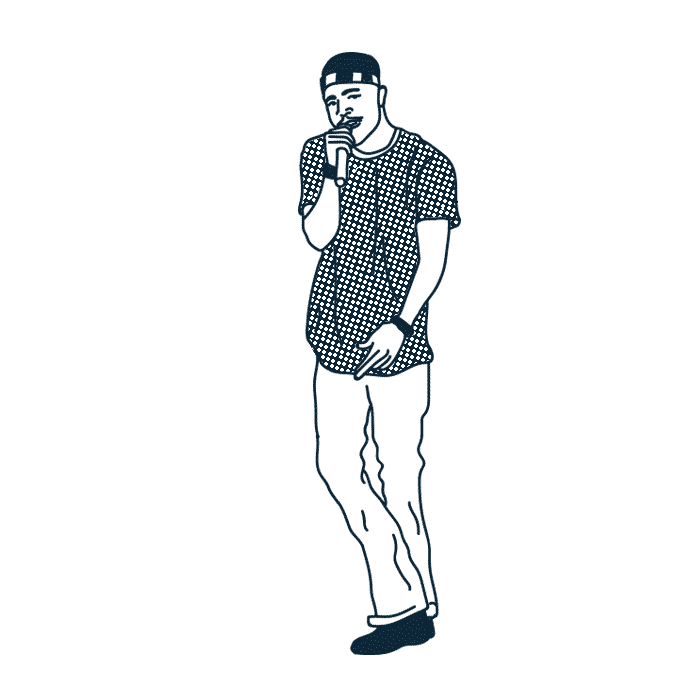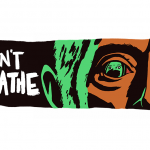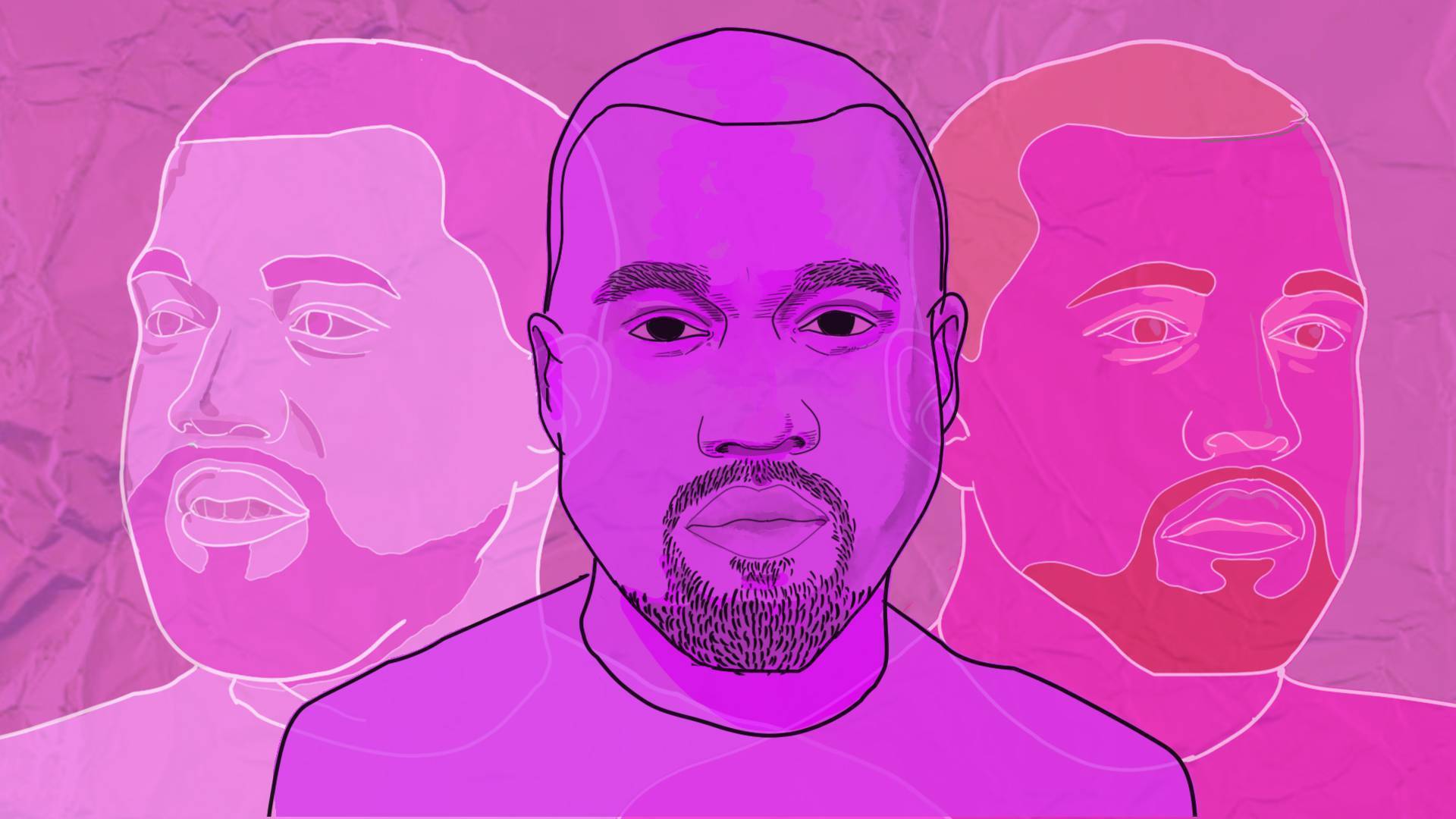
Illustration by Priyoshi Kapur.
After four years of cryptic Tumblr posts, obsessive murmurings on Reddit, and a mistaken release-date proclamation by the New York Times, the follow-up to Frank Ocean’s “Channel Orange” is here. “Blonde” is one of the most anticipated albums of the decade. Does it live up to the hype?
Maybe.
All artistic-existential questions aside, “Blonde” is hot. It’s steaming-the-locker-room-mirror hot — and not only because the muscular Ocean is pictured showering on the LP’s cover. At one moment, a voice-morphed Ocean is melancholically rapping about the death of Trayvon Martin (“that nigga look just like me”), the next he is condescendingly crooning to his male (?) lover (“little virgin/ where’s the wipe”). “Blonde” is the perfect kind of painful: brutally honest, lustfully beautiful, and addictively synthy.
It’s important to note that “Blonde” isn’t the only follow up to “Channel Orange.” Ocean released a visual mixtape titled “Endless” — a ‘zine called “Boys Don’t Cry” exclusively sold in pop-up stores — and then “Blonde. ” Currently, “Blonde” is streaming exclusively on Apple Music. It’s also available as a physical CD in the back of the ‘zine.
The first release from Ocean, “Endless,” began as a live-stream on Ocean’s site and on Apple Music in early August. Showing a black-and-white studio space with workbenches and tools, the stream played, well, endlessly. Ocean’s fans quickly noted every whisper and creak and debated if they were premonitions of what “Boys Don’t Cry” (the rumored title of “Blonde”) would be. Occasionally, Ocean would come on screen, turn on some music, and then work on a large-scale art project.
It was eventually revealed that Ocean was building a staircase. Rolling Stone’s Jonah Weiner called Ocean’s attempt to bridge visuals with music “impressionistic at best.” However, the staircase stunt was clear in its message that Ocean was “a craftsman,” thus rendering the wait for his album justifiable since, as Weiner put it, “craftsmanship requires patience.”
“Blonde” was supposed to drop shortly after the debut of the live-steam, except the New York Times scoop on the release date pushed Ocean to hold his sophomore LP back another few weeks.
“It’s about making sure the perfect aesthetic for the situation has been reached, to do that takes constant tweaking, trial and error,” explained Malay Ho, a prominent Ocean collaborator, in a Reddit AMA about the release of the album.
The video stream was ultimately titled “Endless,” and was a 45-minute visual mixtape of cuts from the studio workshop with songs and instrumentals interspersed throughout. Some critics (and fans) skipped “Endless” for the more traditionally formed album “Blonde,” however.
Christopher Hooton of the Independent summed up the critical consensus on “Endless” nicely: “Is this the album? Is there another album coming? Is everyone hearing the same thing? Is this visual inextricably linked to the music in terms of criticism? Oh shit, there is another album? Okay, I guess we just focus on that?”
The music on “Endless” shouldn’t be dismissed. The tracks are stunning. They overlap, crash, and fragment over a period of 45 minutes. It’s difficult to tell when one song flows into the next, but it doesn’t matter – “Endless” is a mixtape, after all. Some of the tracks on “Endless” are equally as powerful as fan-favorites “Nikes” and “Nights” on “Blonde.” “Turn the mountain view, find a place for a quiet one/ Suburbia got a yard,” from the intro of the track “Hublots,” is about as deep as modern lyrics come.
Yet, while the music astounds, the visuals of “Endless” leave something more to be desired.
When a musician decides to transition into visual art with the ease with which they produce a Grammy-winning album, I tend to get a little nervous. Some can do the crossover — Patti Smith has been jumping medium to medium with success for decades. Beyoncé released the mind-blowing visual album “Lemonade” earlier this year, cementing her place as the goddess of music in 2016.
However, the “Endless” video falls flat — just as the cliché New York Film School black-and-white frame promises it to be. Building a staircase? Not the most brilliant metaphor for progress or moving on — a motif that echoes throughout “Endless” and “Blonde.” The so-called “craftsmanship” isn’t as thrilling as Rolling Stone would like you to believe either – building a staircase isn’t the most complicated construction, after all. And an “Endless” staircase? Seems like a knock-off of Constantin Brancusi’s endless columns. The whole production of “Endless,” in the end, is masturbatory — this work is just for Ocean, not us.
After “Endless,” Ocean released the publication “Boys Don’t Cry” at a series of pop-up shops in New York, Los Angeles, London, and Chicago on August 20. The zine was free; contents included the album “Blonde,” essays and poems by Ocean, and a poem about McDonald’s by Kanye West. I doubt the limited number of fans who received the zine were disappointed. At the same time, the quality of a literary release with work by Kanye West in it is questionable, at the very least.
While “Endless” and “Boys Don’t Cry” may leave some fans disappointed, “Blonde” serves as a worthy follow-up to the incendiary “Channel Orange.” Deftly sliding from the motherly advice on “Be Yourself,” to the weed crumbling into glitter on “Nikes,” Ocean reveals himself to be the musical savant and genre-bending bad boy we all loved (and missed) over the past four years. At once “Blonde” and “Blond” (the LP cover has the masculine form “Blond” on the cover), the album bounces between genders. It’s difficult at times to discern if Ocean is talking about a man or woman on “Blonde,” but in reality, it doesn’t matter. Ocean’s intent is clear — he’s singing about love, not gender. At one moment toying with a memory of going to a gay bar with a blind date on “Good Guy” and then “being the boyfriend / in your wet dreams,” in “Self Control,” it seems that men are predominantly on Ocean’s mind.
But does it matter? Should Ocean’s sexuality have an influence on the album’s artistic value, or does that cross the line into intentional fallacy?
Conceptual art ambitions aside, Ocean should stick to what he knows best: music.





















